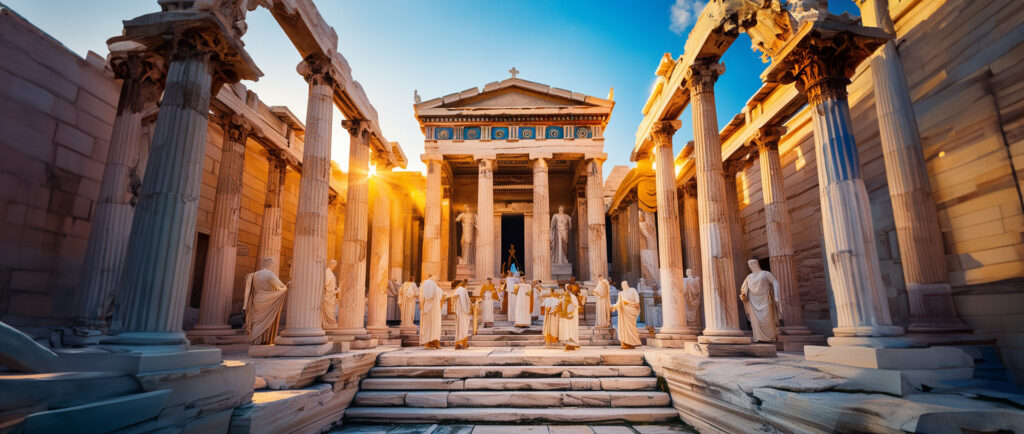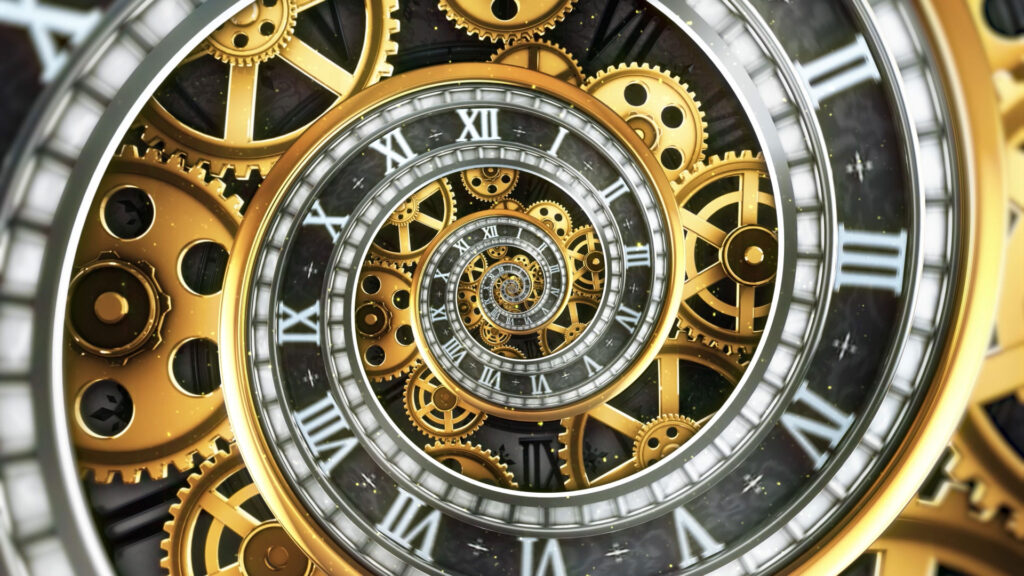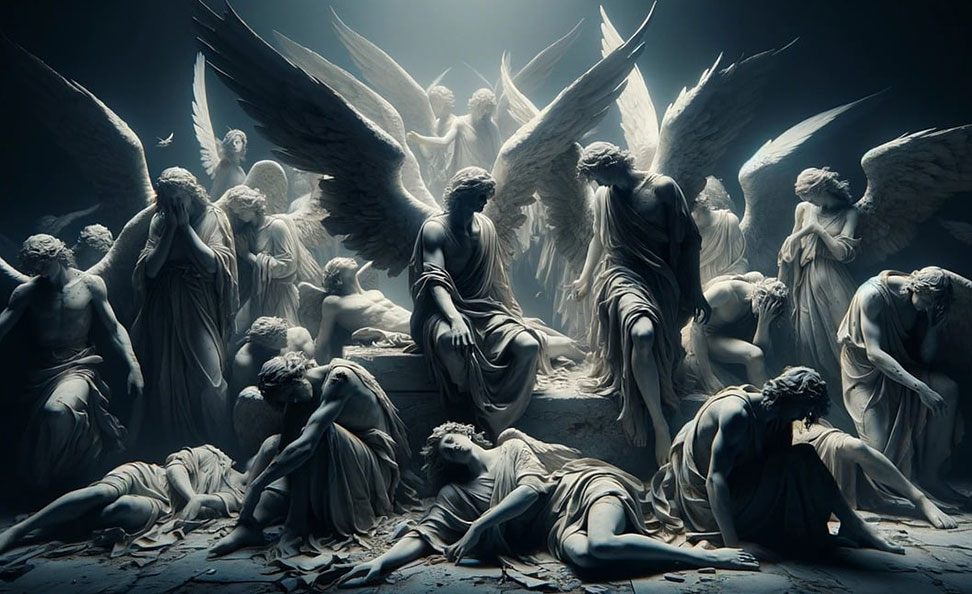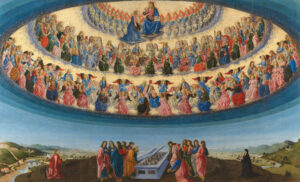The Eleusinian Mysteries were an ancient Greek religious festival and initiation ritual held in honor of the goddess Demeter and her daughter Persephone. The ritual was performed annually in the city of Eleusis, located in modern-day Greece, and was considered one of the most important religious events in ancient Greece.
The ritual began on the summer solstice, with the sacrifices and offerings to Demeter and Persephone. During this time, the participants would fast and abstain from certain foods and activities.
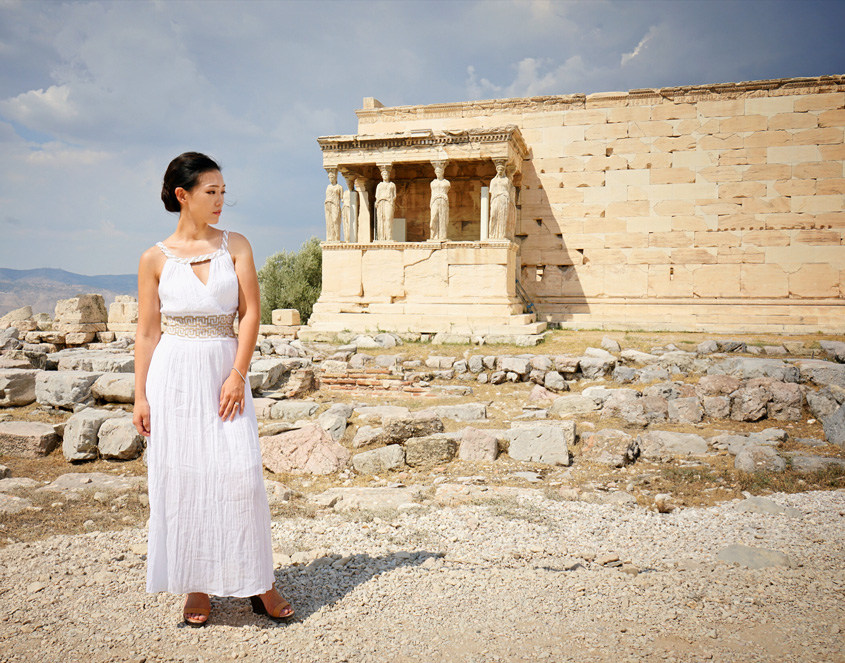
The purpose of these sacrifices and offerings was to purify the participants and prepare them for the initiation ritual.
On the second day of the festival, the participants would gather at the Temple of Demeter, where they would be initiated into the mysteries of the cult.
This involved a series of rituals and teachings, including:
- The Initiation Ritual: The participants would be led through a series of symbolic acts and prayers, which were designed to impart spiritual knowledge and understanding.
- The Lesser Mysteries: These were a series of rituals and teachings that were designed to prepare the participants for the Greater Mysteries.
- The Greater Mysteries: These were the climax of the festival, and involved a series of secret rituals and teachings that were only revealed to those who had been initiated into the cult.
- The Sacred Drama: This was a theatrical performance that reenacted the story of Demeter and Persephone, and was designed to convey the spiritual message of the festival.
- The Feast of the Initiates: After the initiation ritual, the participants would gather for a feast, during which they would share in the joy and celebration of the festival.
The Initiation Ritual was a pivotal component of the Eleusinian Mysteries, designed to impart spiritual knowledge and understanding to the participants, and to initiate them into the cult of Demeter and Persephone. This ritual marked the beginning of the participant’s journey into the mysteries, and was intended to awaken their spiritual awareness and prepare them for the deeper teachings that would follow.
Through a series of symbolic acts and prayers, the participants were introduced to the core principles of the cult, and were invited to embark on a path of spiritual growth and self-discovery.
The Lesser Mysteries played a crucial role in preparing the participants for the Greater Mysteries, and in imparting a sense of community and belonging among the initiates. These rituals and teachings were designed to create a sense of shared experience and understanding among the participants, and to foster a deepening sense of connection with the divine feminine.
By participating in the Lesser Mysteries, individuals were able to develop a deeper appreciation for the natural world and the cycles of life and death, and to begin to understand the symbolic language of the mysteries.
The Greater Mysteries were the climax of the festival, and were designed to convey the spiritual message of the festival in a profound and transformative way.
These rituals and teachings were centered on the themes of fertility, rebirth, and the cycle of life and death, and were intended to reveal the deepest secrets of the mysteries to those who had been initiated into the cult.
The Greater Mysteries were a time of great revelation and insight, and were often accompanied by powerful emotional and spiritual experiences.
The Sacred Drama was a unique and captivating component of the Eleusinian Mysteries, and was a theatrical performance that reenacted the story of Demeter and Persephone.
This dramatic retelling of the myth was designed to convey the spiritual message of the festival in a creative and engaging way, and to bring the participants into a deeper emotional and spiritual connection with the divine feminine. Through the Sacred Drama, the participants were able to experience the myth in a living, breathing way, and to connect with the deeper symbolism and themes of the mysteries.
The Feast of the Initiates was a joyous and celebratory component of the Eleusinian Mysteries, and was a time for the participants to come together and share in the joy and celebration of the festival.
This feast was a time of communal bonding and shared experience, and was designed to reinforce the sense of community and belonging among the initiates.
By sharing in the feast, the participants were able to deepen their connection with one another, and to celebrate their shared journey into the mysteries. The Feast of the Initiates was a time of great joy and celebration, and marked the culmination of the festival and the completion of the participant’s journey into the mysteries.
The Eleusinian Mysteries were an important religious event in ancient Greece, and its rituals and teachings had been passed down for generations, and they continue to hold a deep resonance with those who are drawn to the mysteries of the divine feminine.
The story of Demetres and Persephone
The story of Demeter and Persephone is a central myth in the Eleusinian Mysteries, an ancient Greek religious festival and initiation ritual held in honor of the goddess Demeter and her daughter Persephone.
The myth of Demeter and Persephone is as follows:
Demeter was the goddess of fertility, agriculture, and the harvest, and she was revered by the ancient Greeks as a powerful symbol of the cyclical nature of life and death. She had a daughter named Persephone, who was the goddess of spring growth and fertility.
One day, while Persephone was out picking flowers in a field, Hades (the god of the underworld) saw her and fell in love with her beauty. He decided to abduct her and take her to the underworld as his queen. Demeter, being a powerful goddess, was grief-stricken by her daughter’s disappearance and searched the earth for her.
Meanwhile, Persephone found herself in the underworld, where she was forced to eat pomegranates (a symbol of the underworld) and drink blood (a symbol of the underworld). She was given to Hades as his queen, but she missed her mother dearly and longed to return to the world above.
Demeter, in her grief, neglected her cult and refused to let the earth produce any crops until her daughter was returned to her. This caused a great famine and suffering among the people of the land.
Finally, Zeus (the king of the gods) intervened and ordered Hades to release Persephone back to her mother. However, before she could return, Persephone was forced to eat a few pomegranates, which bound her to the underworld and caused her to become the queen of the underworld. She was able to return to the world above for part of the year, but during that time, she was forced to live with Hades in the underworld.
The myth of Demeter and Persephone is a powerful Symbol of the cycle of life and death, as well as the struggle between light and dark, and the power of love and loss. It also emphasizes the importance of the divine feminine and the role that women played in ancient Greek society and religion.
The Lesser Mysteries
The Lesser Mysteries of the Eleusinian Mysteries were a series of rituals and initiations that took place during the summer months, in contrast to the Greater Mysteries which occurred during the autumn harvest season. The Lesser Mysteries were dedicated to the goddess Demeter and her daughter Persephone, and they focused on the theme of the fertility of the earth and the cycle of growth and decay.
The Lesser Mysteries involved a series of rituals and initiations that were open to all members of the Eleusinian cult, regardless of their social status or gender. These rituals included processions, sacrifices, and dramatic performances that reenacted the myths of Demeter and Persephone.
One of the central rituals of the Lesser Mysteries was the “Cerealia,” a festival in honor of Demeter and her daughter Persephone. During this festival, offerings were made to the goddesses, including cakes made from the first fruits of the harvest. The Cerealia also involved the planting of seeds, which symbolized the hope for a bountiful harvest in the coming year.
Another important ritual of the Lesser Mysteries was the “Thesmophoria,” a festival in honor of Persephone and her mother Demeter. This festival took place during the summer months and involved the worship of the goddesses through offerings, sacrifices, and dramatic performances.
The Lesser Mysteries were seen as a way to connect with the divine feminine and to honor the cycles of life and death. They emphasized the importance of fertility, growth, and decay, and they provided a sense of community and belonging for those who participated in them.
Overall, the Lesser Mysteries were an important part of the Eleusinian Mysteries, and they provided a powerful symbol of the cycle of life and death, as well as the struggle between light and dark. They emphasized the importance of the divine feminine and the role that women played in ancient Greek society and religion.
The Greater Mysteries
The Greater Mysteries of the Eleusinian Mysteries were a series of initiation rites and religious ceremonies that took place during the autumn harvest season. These mysteries were considered more sacred and profound than the Lesser Mysteries, which took place during the summer months. The Greater Mysteries were dedicated to the goddess Demeter and her daughter Persephone, and they focused on the theme of the afterlife and the search for eternal life.
The Greater Mysteries involved a series of initiation rites that were open only to those who had previously undergone the Lesser Mysteries and had been deemed worthy of the deeper mysteries. These initiates were given secret knowledge and teachings that were not shared with the general public.
One of the central rituals of the Greater Mysteries was the “Eleusinian Mysteries,” a series of initiations that took place over several days. During this time, initiates were subjected to a series of tests and trials, including a symbolic journey through the underworld, where they encountered various challenges and obstacles.
Another important ritual of the Greater Mysteries was the “Kerauchos,” a secret rite that involved the use of magic and mystical practices to connect with the divine. This rite was considered one of the most sacred and powerful of the Greater Mysteries, and it was only revealed to those who had proven themselves worthy through their previous initiation into the Lesser Mysteries.
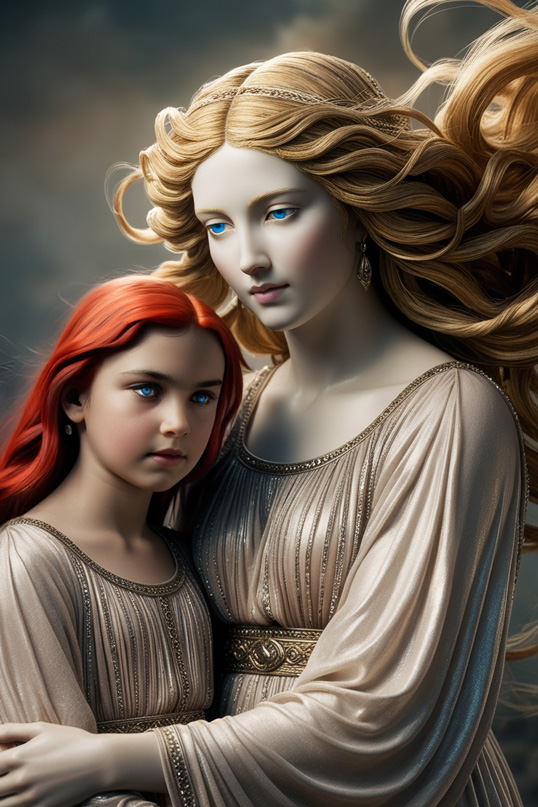
The Greater Mysteries stood as the pinnacle of the Eleusinian Mysteries, a transformative experience that profoundly connected participants with the divine and granted them access to esoteric knowledge and profound understanding. By undergoing this sacred ritual, individuals were forever changed, their lives infused with a deeper sense of purpose and meaning, and their spirits awakened to the mysteries of the universe.
The Greater Mysteries of the Eleusinian Mysteries left an indelible mark on ancient Greek religion and culture, bequeathing a legacy that continues to inspire and captivate us to this day. As a powerful symbol of humanity’s eternal quest for transcendence and enlightenment, they remind us of the transformative power of spiritual growth and the enduring importance of the divine feminine in shaping our understanding of the world and our place within it.

